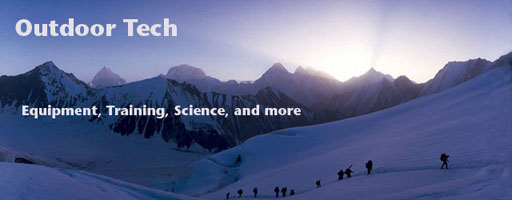Now that the mad dash to the South side of Everest has begun, it looks to be a banner year for accidents and fatalities. With the North side closed because of the Chinese publicity stunt, the South Col route will be more crowded than ever.
What makes this the perfect storm for death is the new stipulation that nobody can go above Camp 2 until May 11. At only 21,500 feet, that is still a long ways from the top (29,028 feet). Then the sheep, er I mean climbers, will be corralled in base camp for 10 days from May 1st to the 10th so they lose even some of that acclimatization.
Assuming the fake Olympic flame actually reaches the summit on schedule for the evening news—a big IF—the climbers in Nepal then have 20 days to get to the top. By June 1st, the Khumbu icefall (photo) is so dangerous only those with a death wish will still be going through. So there will be lots of poorly acclimatized wealthy clients popping Diamox like candy and quietly shooting up dexamethasone all ready to rush up in the small window of opportunity.
As if that combination wasn't bad enough, a study published last Fall in the journal Biology Letters makes the prognosis even grimmer for those over 60. Entitled "Effects of age and gender on success and death of mountaineers on Mount Everest," it presents a statistical analysis for 15 years (1990 - 2005) of people making their first attempt.
The results indicate that your odds of summitting diminish past the age of 40, which kinda sucks. From about age 25 to 40, the odds of reaching the top are about 1 in 3. After that, it's a linear drop off to about a 1 in 8 chance of success at age 60.
But the odds of dying also go up past the age of 60, which really sucks. Until that age, the odds of your becoming a corpse are about 1.5%. The newbie sexagenarians face a 5% chance of kicking the bucket while on the mountain (Everest veterans have better odds). If the geezers do make it to the top, there's roughly a 25% chance they won't make it home alive!
This research is brought to us by the same scientist, Raymond Huey (who really knows his fruit flies and lizards), that showed using oxygen on Everest and K2 greatly increases the chance of survival and that Everest was only climbable less than one third of the past 570 million years due to low oxygen levels on the planet.


No comments:
Post a Comment